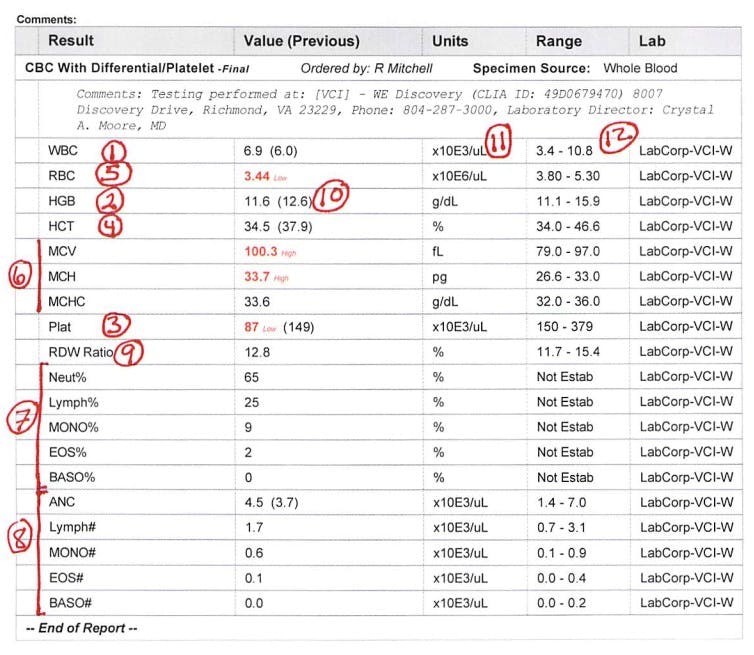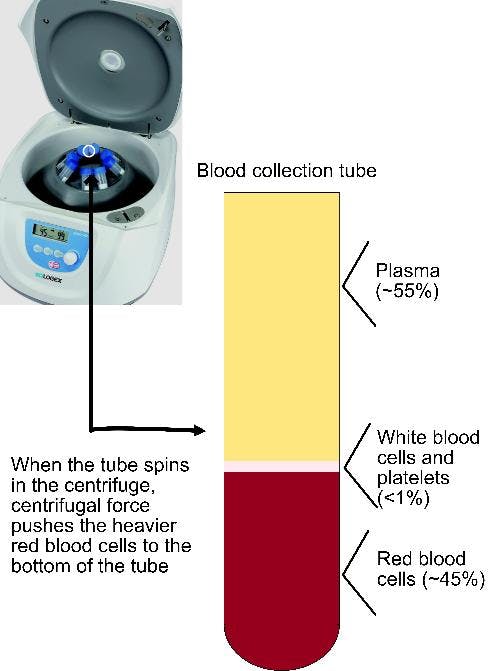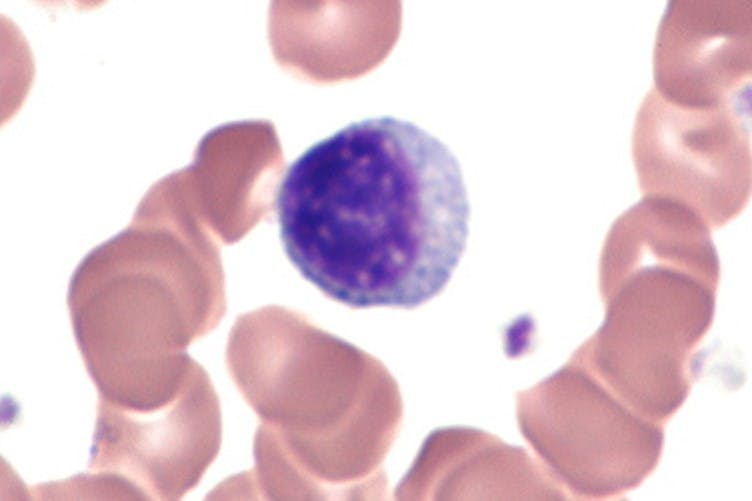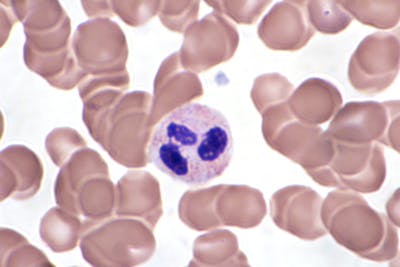The Complete Blood Count (CBC) is performed using a machine through which a small sample of blood flows. As the blood cells stream in single file through a clear chamber, a laser shines on them. The computer reads the scattered light from each cell to determine its type. Then the sample is diluted in distilled water to break apart the red cells, releasing from inside the red-brown pigmented hemoglobin. As the sample flows into another chamber, the computer reads how much light passes through the fluid to calculate the hemoglobin concentration.
4- measuring hematocrit
3- red blood cells and platelets
7- a lymphocyte
7- a neutrophil
The report to the left shows a CBC report and the the items below refer to the handwritten numbers
WBC
White blood cell count. There are many different types of white cells in the blood stream. This is the total WBC count that includes them all. They can be counted easily by a small machine with a laser because of their dense DNA-containing nucleus that red blood cells and platelets do not have. Hgb
Hemoglobin is the major protein in red blood cells. It binds oxygen and carbon dioxide, transporting the molecules of these gases to and from the tissues and the lungs. Low hemoglobin =anemia, meaning fewer red cells in the blood. Plat
Platelets interact with the substrata of damaged blood vessels and proteins circulating in the blood to stop bleeding by initiating a clot. HCT
The hematocrit is the oldest way to measure the concentration of red cells in the blood. When a narrow tube of blood is placed in a centrifuge, the percentage of the total column of blood made up by red cells is the hematocrit. As with the hemoglobin, low hematocrit =anemia. RBC
The red blood cell count measures the absolute number of red blood cells. Using a laser, the CBC machine counts the number of red cells per unit volume. The machine then uses this number to calculate the red cell indices (see below). Physicians do not use the RBC number in clinical practice; we use the HCT and HBG. MCV, MCH, MCHC
With few exceptions the red cell indices are only used to help determine the cause of anemia. Neut%, Lymph%, MONO%, EOS% BASO%
Different types of white blood cells fight different kinds of infection. Neutrophils fight bacterial infections; Lymphocytes fight viral infections. They also cooperate to fight many infections. Modern machines can accurately measure the percentages of normal white blood cells, but when abnormal cells are present, the hematologist or pathologist should review a blood smear under the microscope. ANC, Lymph#, MONO#, EOS# BASO#
By multiplying the % of each particular white blood cell (7) by the total WBC count (1) one can obtain the absolute number of each cell type per unit volume, such as absolute neutrophil count (ANC). RDW Ratio
The red cell distribution width is only helpful if anemia is present. If elevated, it indicates an increased variation in the size of the red cells in the blood. Not offered in all reports, a number in brackets in the result column represents the most recent previous number obtained in that lab. Sometimes a different scale is used from lab to lab or country to country for the normal range of each blood test. Medical personal may refer to the white blood cell count as 4.5 or as 4,500. This is usually the same value, just using different scales. To be precise, the units of measure should always follow the value. Normal range so you can tell how high or low your value. Because of different ranges and different lab techniques, it can be difficult to compare test results from lab to lab. IMPORTANT NOTE: One should never make a decision when the lab calls to report one value out of range. Always make decisions after reviewing the entire CBC.











